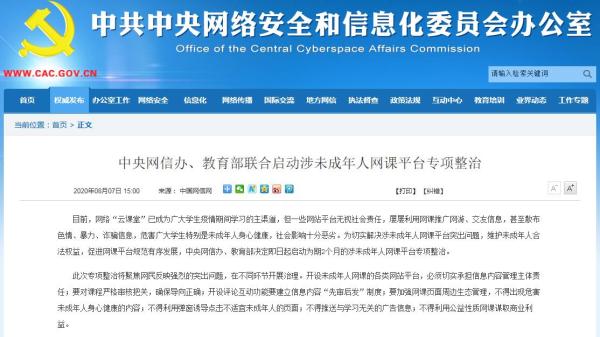иҝҷйҮҢе®һйҷ…дёҠжҳҜжіЁеҶҢж„ҹе…ҙи¶Јзҡ„дәӢ件пјҢжңҚеҠЎз«ҜеҲ°иҝҷйҮҢеҹәжң¬дёҠе·Із»Ҹе‘ҠдёҖж®өиҗҪдәҶ гҖӮ
е®ўжҲ·з«ҜжҺҘе…Ҙжәҗз ҒеҲҶжһҗдёӢйқўжҲ‘们зңӢдёҖдёӢ NioEventLoop жҳҜеҰӮдҪ•еӨ„зҗҶе®ўжҲ·з«ҜиҜ·жұӮзҡ„ гҖӮ
еҪ“еӨҡи·ҜеӨҚз”ЁеҷЁе°ұз»Әж—¶пјҢй»ҳи®Өжү§иЎҢ processSelectedKeysOptimized() ж–№жі•пјҡ
private void processSelectedKeysOptimized() { for (int i = 0; i < selectedKeys.size; ++i) { final SelectionKey k = selectedKeys.keys[i]; selectedKeys.keys[i] = null; final Object a = k.attachment(); // иҝҷйҮҢеӨ„зҗҶзҡ„ attachment жҳҜ AbstractNioChannel if (a instanceof AbstractNioChannel) { processSelectedKey(k, (AbstractNioChannel) a); } else { @SuppressWarnings("unchecked") NioTask<SelectableChannel> task = (NioTask<SelectableChannel>) a; processSelectedKey(k, task); } if (needsToSelectAgain) { // null out entries in the array to allow to have it GC'ed once the Channel close // See https://github.com/netty/netty/issues/2363 selectedKeys.reset(i + 1); selectAgain(); i = -1; } }}иҝҷйҮҢе®һйҷ…дёҠжҳҜж №жҚ®дёҚеҗҢзҡ„зҡ„зұ»еһӢпјҢжү§иЎҢдёҚеҗҢзҡ„ж“ҚдҪңпјҡ
private void processSelectedKey(SelectionKey k, AbstractNioChannel ch) { final AbstractNioChannel.NioUnsafe unsafe = ch.unsafe(); // зңҒз•Ҙ try { int readyOps = k.readyOps(); if ((readyOps & SelectionKey.OP_CONNECT) != 0) { int ops = k.interestOps(); ops &= ~SelectionKey.OP_CONNECT; k.interestOps(ops); unsafe.finishConnect(); } // Process OP_WRITE first as we may be able to write some queued buffers and so free memory. if ((readyOps & SelectionKey.OP_WRITE) != 0) { // Call forceFlush which will also take care of clear the OP_WRITE once there is nothing left to write ch.unsafe().forceFlush(); } // Also check for readOps of 0 to workaround possible JDK bug which may otherwise lead // to a spin loop if ((readyOps & (SelectionKey.OP_READ | SelectionKey.OP_ACCEPT)) != 0 || readyOps == 0) { unsafe.read(); } } catch (CancelledKeyException ignored) { unsafe.close(unsafe.voidPromise()); } }
жҺЁиҚҗйҳ…иҜ»
- Netty е®һжҲҳпјҡеҰӮдҪ•е®һзҺ°ж–Ү件жңҚеҠЎеҷЁпјҹ
- Netty е®һжҲҳпјҡеҰӮдҪ•е®һзҺ° HTTP жңҚеҠЎеҷЁпјҹ
- д»Җд№ҲжҳҜ2021е№ҙжңҖдҪізҡ„еҗҺз«ҜејҖеҸ‘жЎҶжһ¶
- еҰӮдҪ•е®һзҺ°еҮ зҷҫеҸ°SIPз»Ҳз«Ҝе®һзҺ°иҮӘеҠЁеҢ–йғЁзҪІ
- еҰӮдҪ•еңЁ Linux з»Ҳз«ҜжҹҘзңӢеӣҫеғҸ
- жө…и°ҲlinuxдёӢеҹәдәҺUDPжңҚеҠЎзҡ„иҙҹиҪҪеқҮиЎЎж–№жі•
- зІҪеӯҗжҳҜз«ҜеҚҲиҠӮзҡ„еҝ…еӨҮйЈҹзү©жҚ®иҜҙеңЁжҳҘз§Ӣж—¶жңҹ е…ідәҺз«ҜеҚҲзІҪеӯҗзҡ„з”ұжқҘ
- з«ҜеҚҲиҠӮдә”еҪ©зәҝзҡ„йўңиүІ з«ҜеҚҲиҠӮз»‘дә”иүІзәҝзҡ„ж„Ҹд№ү
- й©ұдә”жҜ’жҳҜд»Җд№ҲиҠӮж—Ҙ з«ҜеҚҲиҠӮзҡ„дә”жҜ’жңүе“Әдәӣ
- иҜҫеҗҺжңҚеҠЎз”іиҜ·зҗҶз”ұжҖҺд№ҲеҶҷпјҹ
















